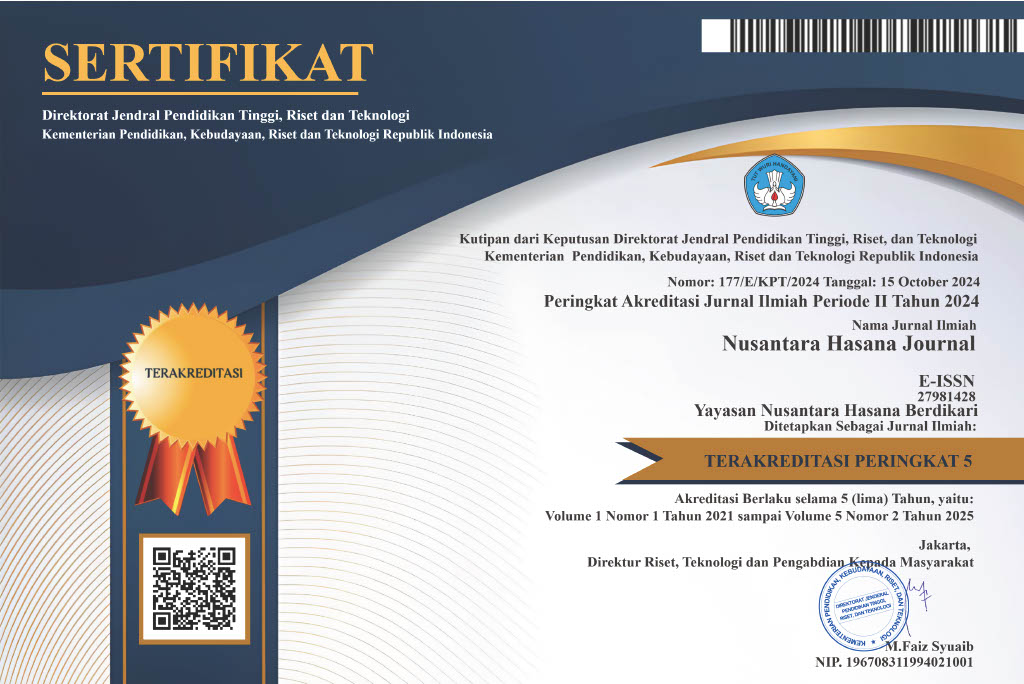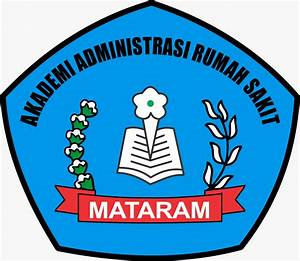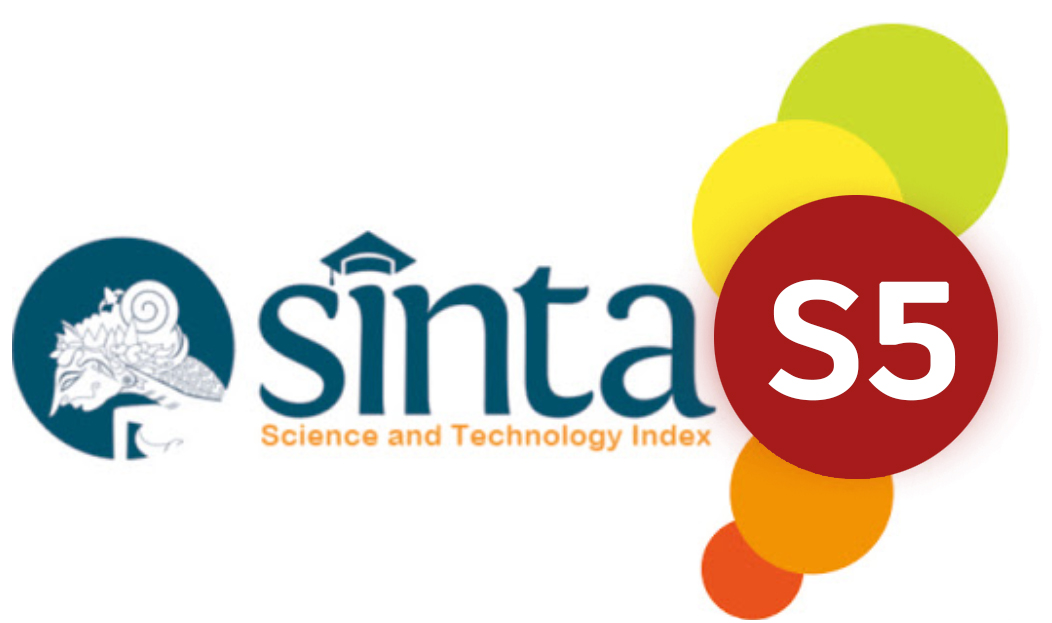MODFLOW DAN FEFLOW UNTUK PEMODELAN HIDROGEOLOGI PADA AREA TAMBANG BATUBARA DI KALIMANTAN SELATAN
DOI:
https://doi.org/10.59003/nhj.v5i1.1613Keywords:
Groundwater modeling, MODFLOW, FEFLOW, Open-pit mine, Hydrogeological simulationAbstract
This study aims to compare the capabilities of MODFLOW and FEFLOW software in modeling groundwater flow in open-pit mining environments with complex geometries. The method includes literature review, technical feature analysis of both software, and evaluation of simulation performance based on hydrogeological parameters and geospatial conditions. The results show that MODFLOW offers advantages in accessibility due to its open-source nature and is efficient for mining areas with relatively simple geometries. However, its limitation in grid flexibility reduces its ability to accurately represent complex morphologies and geological structures. In contrast, FEFLOW provides higher flexibility through an unstructured mesh system and integrates saturated–unsaturated flow in a single model, making it more suitable for advanced hydrogeological modeling. FEFLOW's capability to represent irregular mining geometries, simulate chemical reactions, and provide 3D visualizations is highly relevant for mining conditions in Indonesia, although it is limited by higher computational demand and licensing costs. This study offers valuable insights into selecting groundwater modeling software based on geological complexity and mining analysis objectives.
Downloads
References
Adnyano, A. . I. A., & Bagaskoro, M. (2020). Kajian Teknis Dewatering System Tambang Pada Pertambangan Batubara. PROMINE, 8(1), 28–33. https://doi.org/10.33019/PROMINE.V8I1.1794
Alloisio, S., Douglas, B. R., Mckittrick, R., & Prigneau, P. (2004). Groundwater Modelling for Large-scale Mine Dewatering in Chile: MODFLOW or FEFLOW? https://www.researchgate.net/publication/263612704_Groundwater_modelling_for_large-scale_mine_dewatering_in_Chile_MODFLOW_or_FEFLOW
Anderson, M. P., Woessner, W. W., & Hunt, R. J. (2015). Applied Groundwater Modeling: Simulation Of Flow And Advective Transport (2nd ed.). Academic Press. https://www.sciencedirect.com/book/9780120581030/applied-groundwater-modeling
Bortnikova, S., Yurkevich, N., Bessonova, E., Karin, Y., & Saeva, O. (2013). The Combination of Geoelectrical Measurements and Hydro-Geochemical Studies for the Evaluation of Groundwater Pollution in Mining Tailings Areas. In A. Scozzari & E. Dotsika (Eds.), Threats to the Quality of Groundwater Resources (pp. 27–37). Springer-Verlag. https://doi.org/10.1007/698_2013_234
Brunner, P., Simmons, C. T., Cook, P. G., & Therrien, R. (2010). Modeling Surface Water-groundwater Interaction with MODFLOW: Some Considerations. Ground Water, 48(2), 174–180. https://doi.org/10.1111/j.1745-6584.2009.00644.x
Diersch, H.-J. G. (2014). FEFLOW: Finite Element Modeling of Flow, Mass and Heat Transport in Porous and Fractured Media. Springer-Verlag. https://doi.org/10.1007/978-3-642-38739-5
Fetter, C. W. (2001). Applied Hydrogeology (P. Lynch, S. Hale, & B. Sturla (eds.); 4th ed.). Prentice-Hall. https://welib.org/slow_download/7d12d7aa83dfe67c71d5ef5717110812/0/0
Franks, D. M., Boger, D. V, Côte, C. M., & Mulligan, D. R. (2011). Sustainable Development Principles for the Disposal of Mining and Mineral Processing Wastes. Resources Policy, 36(2), 114–122. https://doi.org/https://doi.org/10.1016/j.resourpol.2010.12.001
Harbaugh, A. W. (2005). MODFLOW-2005, The U.S. Geological Survey Modular Ground-Water Model—the Ground-Water Flow Process. In G. A. Norton & P. P. Leahy (Eds.), Modeling techniques, Section A. Ground Water (p. 253 p). U.S. Geological Survey. https://pubs.usgs.gov/tm/2005/tm6A16/PDF/TM6A16.pdf
Masud, A., & Hughes, T. J. R. (2002). A Stabilized Mixed Finite Element Method for Darcy Flow. Computer Methods in Applied Mechanics and Engineering, 191(39), 4341–4370. https://doi.org/https://doi.org/10.1016/S0045-7825(02)00371-7
Middlemis, H., & Peeters, L. (2018). Uncertainty Analysis: Guidance for Groundwater Modelling within A Risk Management Framework. https://doi.org/10.13140/RG.2.2.34589.36323
Murray, T., & Power, W. (2021). Information Guidelines Explanatory Note: Characterisation and Modelling of Geological Fault Zone. https://www.researchgate.net/publication/361416244_Characterisation_and_modelling_of_geological_fault_zones_Explanatory_Note
Pemerintah Provinsi Kalimantan Selatan. (2022). Laporan Penyelenggaraan Pemerintah Daerah Provinsi Kalimantan Selatan Tahun Anggaran 2021. Pemerintah Provinsi Kalimantan Selatan. https://kalselprov.go.id/storage/LPPD2021KALSEL.pdf
Rapantova, N., Grmela, A., Vojtek, D., Halir, J., & Michalek, B. (2007). Ground Water Flow Modelling Applications in Mining Hydrogeology. Mine Water and the Environment, 26(4), 264–270. https://doi.org/10.1007/s10230-007-0017-1
Tahershamsi, A., Feizi, A., & Molaei, S. (2018). Modeling Groundwater Surface by MODFLOW Math Code and Geostatistical Method. Civil Engineering Journal, 4(4), 812–827. https://doi.org/10.28991/cej-0309135
Torres, H. (2020). Assessing Groundwater Contamination Risk and Detection of Unknown Sources Using a Multi-Component Reactive Transport Model. Journal of Geoscience and Environment Protection, 8, 132–158. https://doi.org/10.4236/gep.2020.85009
Trijayanti, H., Cahyadi, T. A., & Ernawati, R. (2022). Aplikasi Penggunaan Metode Finite Difference dalam Pemodelan Air Tanah pada Kasus Pertambangan : Literatur Review. Jurnal Himasapta, 7(1), 21 – 26. https://doi.org/10.20527/jhs.v7i1
Wang, H. F., & Anderson, M. P. (1995). Introduction to Groundwater Modeling : Finite Difference and Finite Element Methods (A. Cox (ed.)). W H Freeman & Co. https://s1.welib-public.org/hs6/libgenrs_nonfiction/2216000/d9d6605ad11d9e29b7740d967cab99fc~/1754516608.CKn3mcHSxk2XguWq3p02Kg/Introduction to Groundwater Modeling - Finite Difference and -- Herbert F. Wang, Mary P. Anderson. -- ( WeLib.org ).pdf
Woessner, W. W., & Poeter, E. P. (2020). Hydrogeologic Properties of Earth Materials and Principles of Groundwater Flow (J. Cherry & E. Poeter (eds.)). The Groundwater Project, Guelph. https://gw-project.org/books/hydrogeologic-properties-of-earth-materials-and-principles-of-groundwater-flow/
Wu, Z., Gao, X., Li, C., Huang, H., Bai, X., Zheng, L., Shi, W., Han, J., Tan, T., Chen, S., Ma, S., Li, S., Zhu, M., & Li, J. (2025). Mechanisms and Genesis of Acidic Goaf Water in Abandoned Coal Mines: Insights from Mine Water–Surrounding Rock Interaction. Minerals, 15(7), 753. https://doi.org/10.3390/min15070753
Xie, W., Ren, B., Hursthouse, A. S., Wang, Z., & Luo, X. (2020). Simulation of Manganese Transport in Groundwater Using Visual MODFLOW: a Case Study from Xiangtan Manganese Ore Area in Central China. Polish Journal of Environmental Studies, 30(2), 1409–1420. https://doi.org/10.15244/pjoes/125766
Zhang, X., Yang, H., & Cui, Z. (2018). Evaluation and Analysis of Soil Migration and Distribution Characteristics of Heavy Metals in Iron Tailings. Journal of Cleaner Production, 172, 475–480. https://doi.org/https://doi.org/10.1016/j.jclepro.2017.09.277
Downloads
Published
How to Cite
Issue
Section
License
Copyright (c) 2025 Jarwanto

This work is licensed under a Creative Commons Attribution-NonCommercial-ShareAlike 4.0 International License.
NHJ is licensed under a Creative Commons Attribution-NonCommercial-ShareAlike 4.0 International License.
Articles in this journal are Open Access articles published under the Creative Commons CC BY-NC-SA License This license permits use, distribution and reproduction in any medium for non-commercial purposes only, provided the original work and source is properly cited.
Any derivative of the original must be distributed under the same license as the original.
























